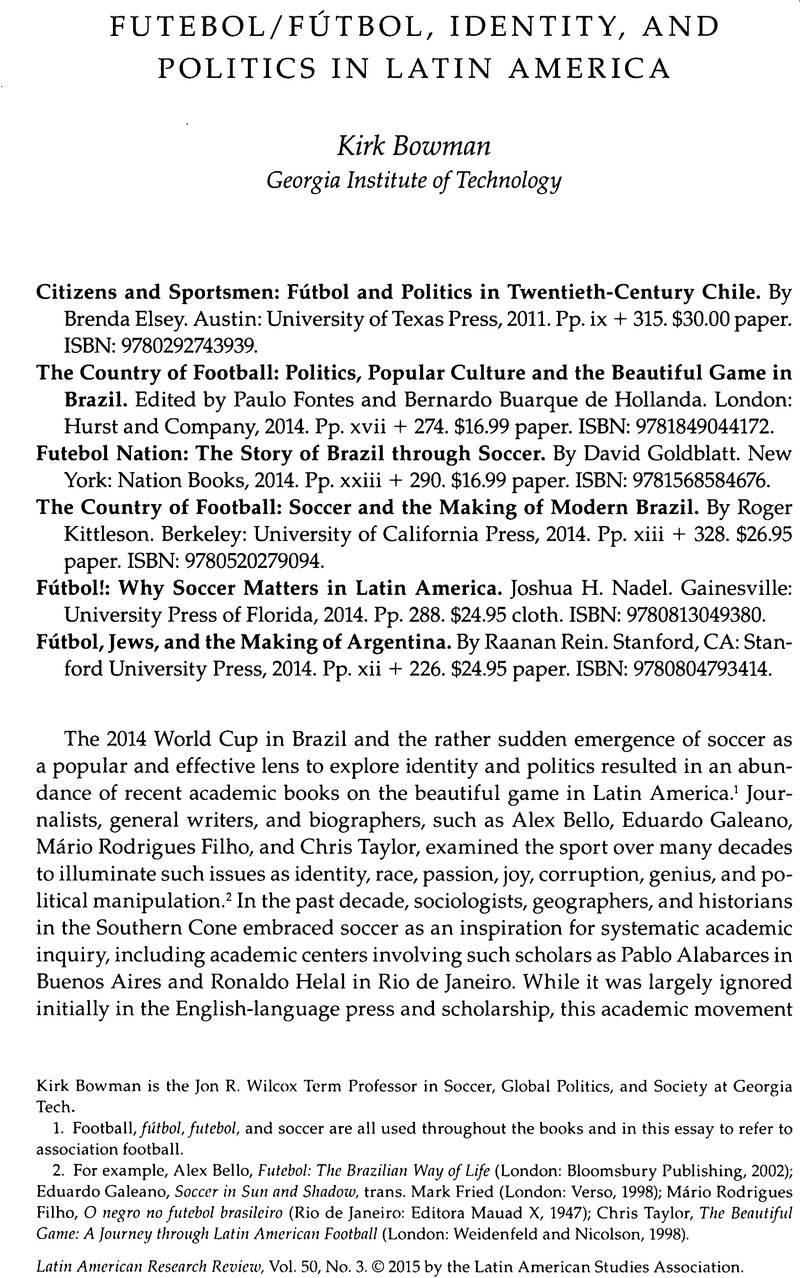Article contents
Futebol/Fútbol, Identity, and Politics in Latin America
Review products
Published online by Cambridge University Press: 05 September 2022
Abstract

- Type
- Review Essays
- Information
- Copyright
- Copyright © 2015 by the Latin American Studies Association
References
1. Football, fútbol, futebol, and soccer are all used throughout the books and in this essay to refer to association football.
2. For example, Alex Bello, Futebol: The Brazilian Way of Life (London: Bloomsbury Publishing, 2002); Eduardo Galeano, Soccer in Sun and Shadow, trans. Mark Fried (London: Verso, 1998); Mário Rodrigues Filho, O negro no futebol brasileiro (Rio de Janeiro: Editora Mauad X, 1947); Chris Taylor, The Beautiful Game: A Journey through Latin American Football (London: Weidenfeld and Nicolson, 1998).
3. See Charles Tilly, Coercion, Capital, and European States: AD 990–1992, rev. ed. (New York: Wiley-Blackwell, 1992); and for Latin America, Miguel Angel Centeno, Blood and Debt: War and the Nation-State in Latin America (University Park: Pennsylvania State University Press).
4. See Benedict Anderson, Imagined Communities, rev. ed. (London: Verso, 1991).
5. See Jerry Dávila, Diploma of Whiteness: Race and Social Policy in Brazil, 1917–1945 (Durham, NC: Duke University Press, 2003); and Edward E. Telles, Race in Another America: The Significance of Skin Color in Brazil (Princeton, NJ: Princeton University Press, 2004).
6. Gilberto Freyre, Casa-grande e senzala (Rio de Janeiro: Maia e Schmidt, 1933); José Vasconcelos, La raza cósmica (Madrid: Agencia Mundial de Librería, 1925).
7. For more on the use of the stadium by the Chilean repressive apparatus, see Thomas Wright, State Terrorism in Latin America: Chile, Argentina, and International Human Rights (Lanham, MD: Rowman and Littlefield, 2006).
8. For more on the wide range of immigrant groups to Latin America, see Jeffrey Lesser, Negotiating National Identity: Immigrants, Minorities, and the Struggle for Ethnicity in Brazil (Durham, NC: Duke University Press, 1999).
9. For the most compelling argument on the role of the homeland in national identity, see Walker Connor, Ethnonationalism: The Quest for Understanding (Princeton, NJ: Princeton University Press, 1993).
- 6
- Cited by




